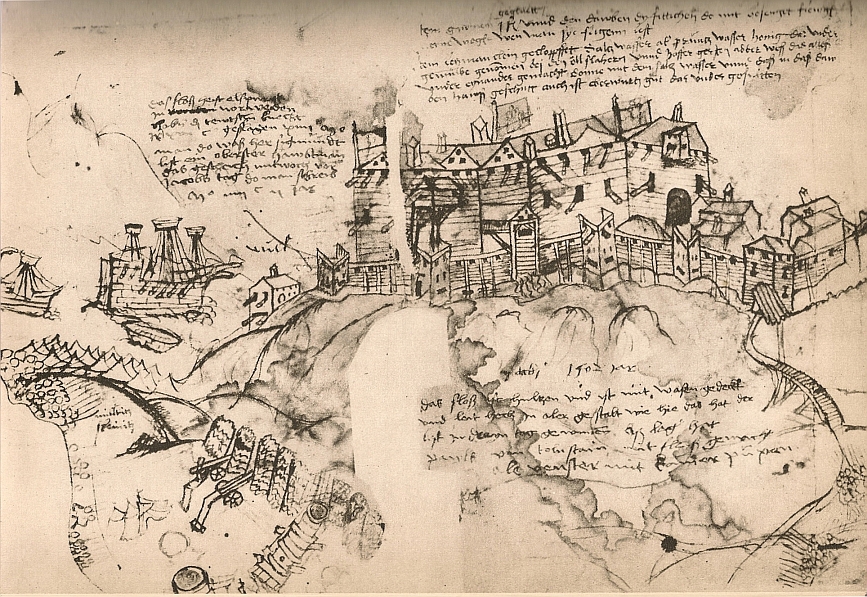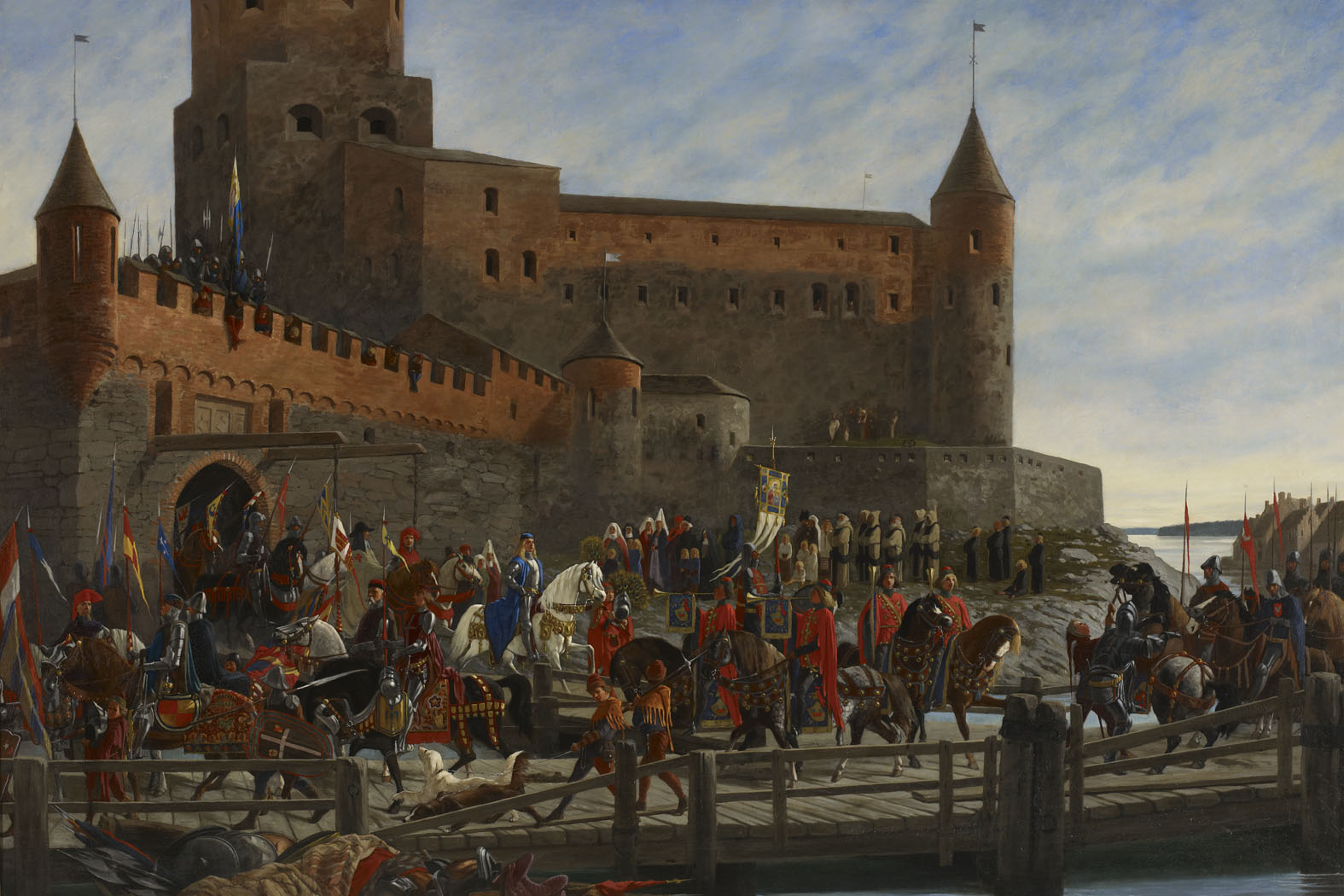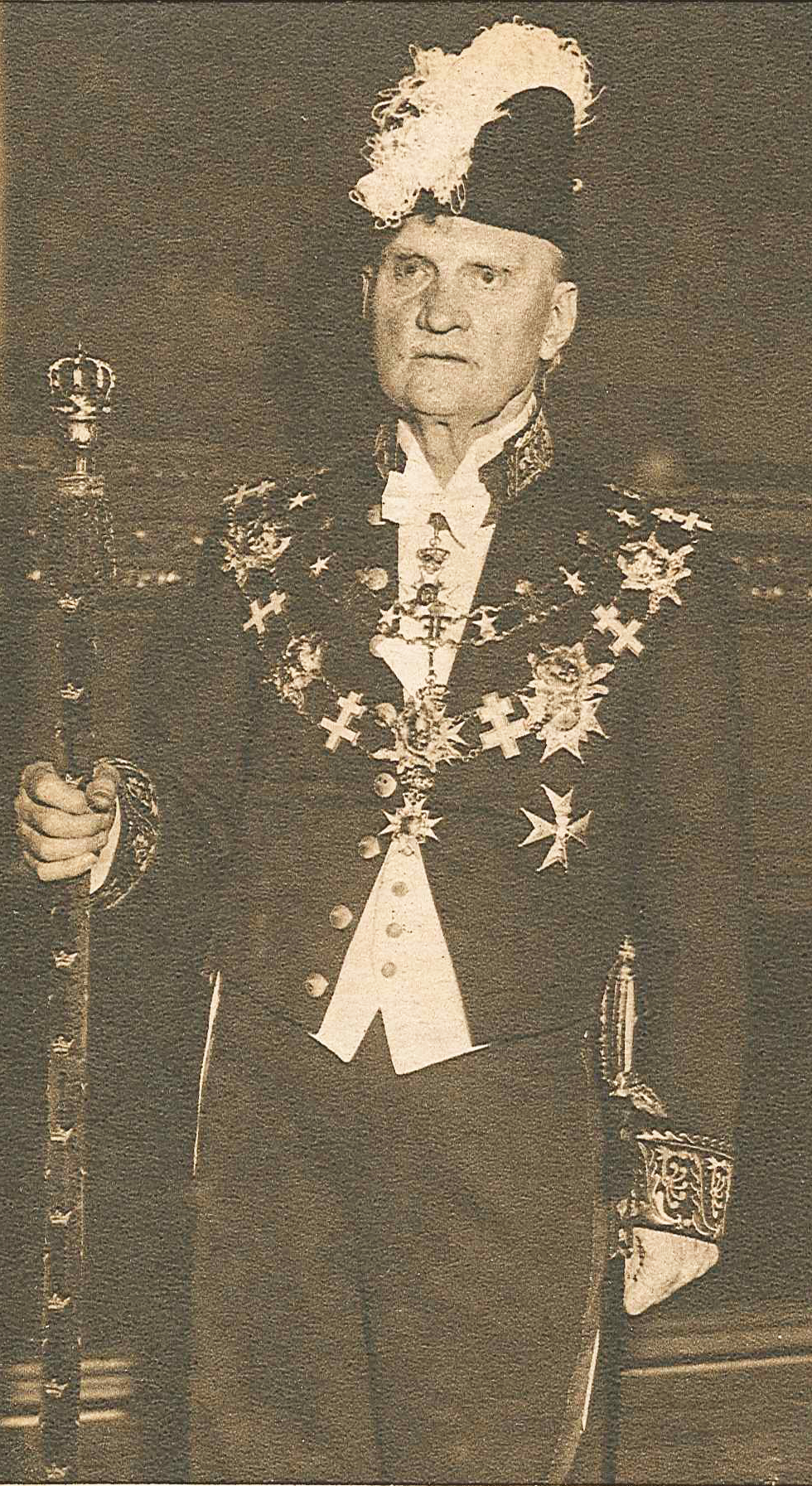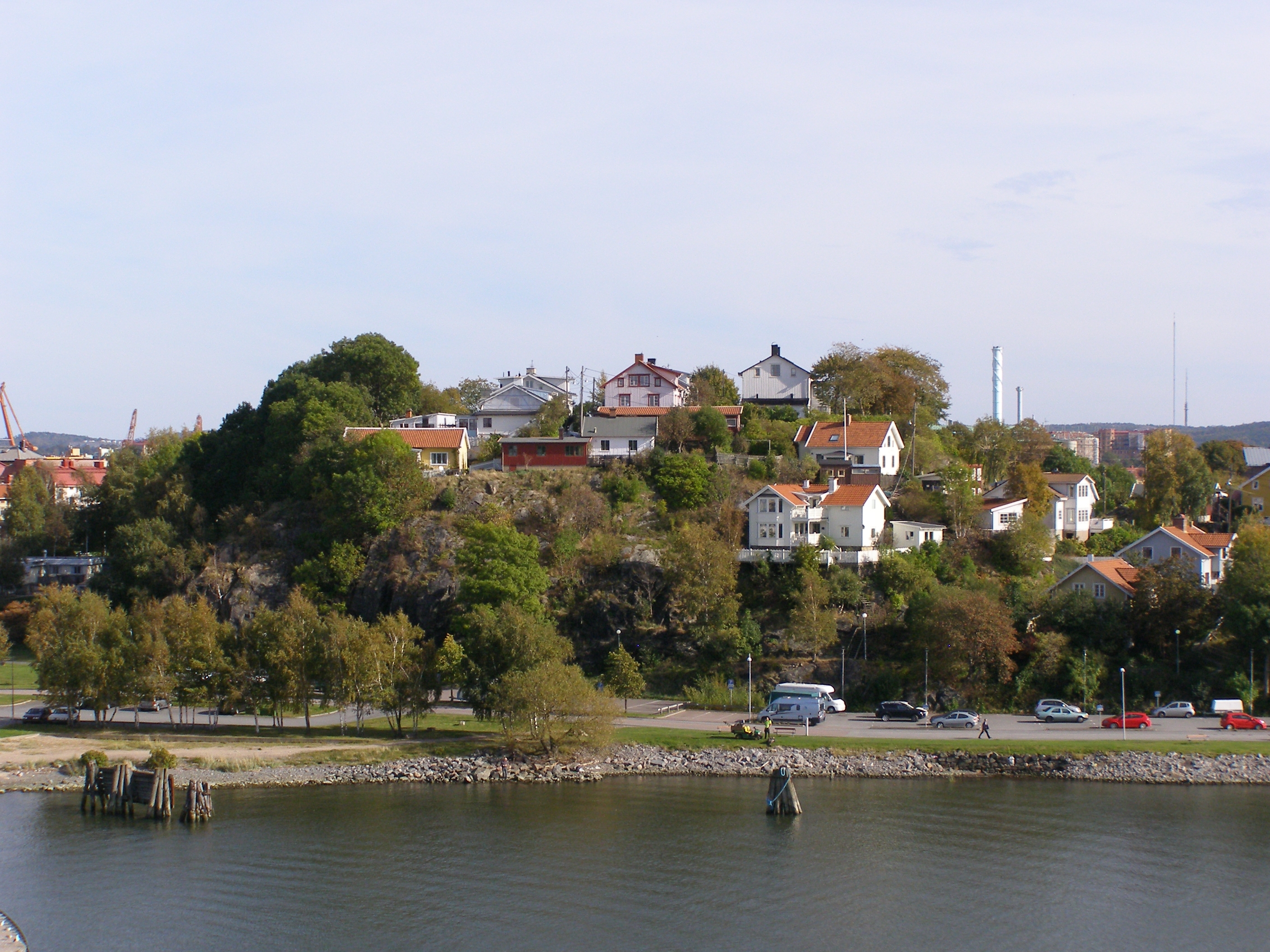|
Old Älvsborg
Älvsborg (literally "river stronghold" in Swedish), now generally known as Old Älvsborg ( sv, Gamla Älvsborg) or Älvsborg Castle ( sv, Älvsborgs Slott) to distinguish it from the later New Älvsborg and Älvsborg Fortress, was a medieval castle situated on the rocky outcrop known as Klippan, on the south bank of the Göta Älv river within the urban area of the modern city of Gothenburg. It was demolished in the late seventeenth century, but some of its ruins are still visible today, close to the southern pylon of the Älvsborg Bridge. History During the Middle Ages, the Göta Älv was Sweden's sole point of access to the North Sea, as the coastline to the north (Bohuslän) was part of Norway until 1658, while the area to the south (Halland) was part of Denmark until 1645. The river mouth, and by extension the heights at Klippan overlooking it, therefore had immense strategic significance. Älvsborg Castle is first mentioned in written sources during the reign of King Alb ... [...More Info...] [...Related Items...] OR: [Wikipedia] [Google] [Baidu] |
Gothenburg
Gothenburg (; abbreviated Gbg; sv, Göteborg ) is the second-largest city in Sweden, fifth-largest in the Nordic countries, and capital of the Västra Götaland County. It is situated by the Kattegat, on the west coast of Sweden, and has a population of approximately 590,000 in the city proper and about 1.1 million inhabitants in the metropolitan area. Gothenburg was founded as a heavily fortified, primarily Dutch, trading colony, by royal charter in 1621 by King Gustavus Adolphus. In addition to the generous privileges (e.g. tax relaxation) given to his Dutch allies from the ongoing Thirty Years' War, the king also attracted significant numbers of his German and Scottish allies to populate his only town on the western coast. At a key strategic location at the mouth of the Göta älv, where Scandinavia's largest drainage basin enters the sea, the Port of Gothenburg is now the largest port in the Nordic countries. Gothenburg is home to many students, as the city includes ... [...More Info...] [...Related Items...] OR: [Wikipedia] [Google] [Baidu] |
North Sea
The North Sea lies between Great Britain, Norway, Denmark, Germany, the Netherlands and Belgium. An epeiric sea on the European continental shelf, it connects to the Atlantic Ocean through the English Channel in the south and the Norwegian Sea in the north. It is more than long and wide, covering . It hosts key north European shipping lanes and is a major fishery. The coast is a popular destination for recreation and tourism in bordering countries, and a rich source of energy resources, including wind and wave power. The North Sea has featured prominently in geopolitical and military affairs, particularly in Northern Europe, from the Middle Ages to the modern era. It was also important globally through the power northern Europeans projected worldwide during much of the Middle Ages and into the modern era. The North Sea was the centre of the Vikings' rise. The Hanseatic League, the Dutch Republic, and the British each sought to gain command of the North Sea and access t ... [...More Info...] [...Related Items...] OR: [Wikipedia] [Google] [Baidu] |
Castellan
A castellan is the title used in Medieval Europe for an appointed official, a governor of a castle and its surrounding territory referred to as the castellany. The title of ''governor'' is retained in the English prison system, as a remnant of the medieval idea of the castellan as head of the local prison. The word stems from the Latin ''Castellanus'', derived from ''castellum'' "castle". Sometimes also known as a ''constable'' of the castle district, the Constable of the Tower of London is, in fact, a form of castellan, with representative powers in the local or national assembly. A castellan was almost always male, but could occasionally be female, as when, in 1194, Beatrice of Bourbourg inherited her father's castellany of Bourbourg upon the death of her brother, Roger. Similarly, Agnes became the castellan of Harlech Castle upon the death of her husband John de Bonvillars in 1287. Initial functions After the fall of the Western Roman Empire, foreign tribes migrated into ... [...More Info...] [...Related Items...] OR: [Wikipedia] [Google] [Baidu] |
Karl VIII Of Sweden
Charles VIII ( sv, Karl; 1408–1470), contemporaneously known as Charles II and called Charles I in Norwegian context, was king of Sweden (1448–1457, 1464–1465 and 1467–1470) and king of Norway (1449–1450). Regnal name Charles was the second Swedish king by the name of Charles (Karl). ''Charles VIII'' is a posthumous invention, counting backwards from Charles IX (r. 1604–1611) who adopted his numeral according to a fictitious history of Sweden. Six others before Charles VII are unknown to any sources before Johannes Magnus's 16th century book ', and are considered his invention. Charles was the first Swedish monarch of the name to actually use a regnal number as ''Charles II'' (later retrospectively renumbered VIII), on his wife's tombstone (1451) at Vadstena. Early life Karl Knutsson was born in October 1408 or 1409, at Ekholmen Castle, the son of Knut Tordsson (Bonde), knight and member of the privy council (''riksråd''), and Margareta Karlsdotter (Sparre av Toft ... [...More Info...] [...Related Items...] OR: [Wikipedia] [Google] [Baidu] |
Marshal Of The Realm (Sweden)
His Majesty's Marshal of the Realm ( sv, Hans Majestät Konungens riksmarskalk) who heads the Office of the Marshal of the Realm ( sv, Riksmarskalksämbetet), is the highest official in the Royal Court of Sweden. The Marshal of the Realm is appointed by the monarch and is directly responsible for the organization and affairs of the court, and for maintaining liaison arrangements with the Riksdag and the Prime Minister/Government. Press releases and official statements from the Swedish Royal Family to the press and the public are typically released through the Marshal of the Realm. The office was created in 1607 during the reign of Charles IX, and until 1936 during the reign of Gustaf V, with the appointment of Axel Vennersten, it had always been held by a member of the Swedish nobility. The incumbent is in formal writing entitled to the style of Excellency, and is today, apart from Swedish ambassadors, the only officeholder to use this style. Until the 1970s, the Prime Minister an ... [...More Info...] [...Related Items...] OR: [Wikipedia] [Google] [Baidu] |
Engelbrekt Engelbrektsson
Engelbrekt Engelbrektsson (1390s – 27 April/4 May 1436) was a Swedish nobleman, rebel leader and military boss of German ancestry. He was the leader of the Engelbrekt rebellion in 1434 against Eric of Pomerania, king of the Kalmar Union. Engelbrekt Parish (''Engelbrekts församling'') and Engelbrekt Church (''Engelbrektskyrkan'') in the Church of Sweden Diocese of Stockholm were both named in his honor. Biography Engelbrekt Engelbrektsson was the owner of a mine and ironworks in the historic mining region of Bergslagen. He was from the parish of Norberg (''Norbergs socken'') in Västmanland. His family originally came from Germany, having migrated to Sweden in the 1360s.NE (2023)''Engelbrekt Engelbrektsson''(''Nationalencyklopedin''). (Link checked 13 May 2013.) The family coat of arms shows three half-lilies formed into a triangle. Engelbrekt was dissatisfied by the numerous offences of the Danish local bailiffs and heavy taxation. In 1434 he started a rebellion with the s ... [...More Info...] [...Related Items...] OR: [Wikipedia] [Google] [Baidu] |
Erik Of Pomerania
Eric of Pomerania (1381 or 1382 – 24 September 1459) was the ruler of the Kalmar Union from 1396 until 1439, succeeding his grandaunt, Queen Margaret I. He is known as Eric III as King of Norway (1389–1442), Eric VII as King of Denmark (1396–1439) and has been called Eric XIII as King of Sweden (1396–1434, 1436–39). Later, in all three countries he became more commonly known as ''Erik av Pommern'' (Eric of Pomerania), a pejorative intended to point out that he belonged elsewhere. Eric was ultimately deposed from all three kingdoms of the union, but in 1449 he inherited one of the partitions of the Duchy of Pomerania and ruled it as duke until his death in 1459. Succession background Eric was born in either 1381 or 1382 in Darłowo, Pomerania (Poland). Born Bogusław, Eric was the son of Wartislaw VII, Duke of Pomerania, and Maria of Mecklenburg-Schwerin. Margaret I, who ruled the kingdoms of Denmark, Norway, and Sweden, wanted her realm to be unified and peaceful an ... [...More Info...] [...Related Items...] OR: [Wikipedia] [Google] [Baidu] |
Lindholmen Castle (Gothenburg)
Lindholmen Castle ( sv, Borgen Lindholmen) was a medieval castle on the former island of Lindholmen, which is now part of the larger island of Hisingen and lies within the urban area of modern Gothenburg. The castle stood on a rocky outcrop, which is still known as Slottsberget ("The Castle Hill"), overlooking the Göta Älv. This was an area of immense strategic significance in the Middle Ages, as at that time Hisingen straddled the Norwegian-Swedish border, and the mouth of the Göta Älv was Sweden's sole point of access to the North Sea. The fortress is attested for the first time in 1333, when King Magnus IV Eriksson of Sweden marked one of his letters as having been written ''in castro nostro Lindholm'' ('in our castle Lindholm'), and it appears again in a letter from 1334, this time spelt ''Lyndholmis''. It is sometimes claimed that the castle had previously been mentioned in Sturla Þórðarson's '' Hákonar saga Hákonarsonar'', as the saga refers at one point to a loc ... [...More Info...] [...Related Items...] OR: [Wikipedia] [Google] [Baidu] |
Nordisk Familjebok
''Nordisk familjebok'' (, "Nordic Family Book") is a Swedish encyclopedia that was published in print from between 1876 and 1993, and that is now fully available in digital form via Project Runeberg at Linköping University. Despite their considerable age and relative obsolescence, the public domain editions of the encyclopedia remain important reference works in Finland, especially on Finnish Wikipedia. History First edition ''Nordisk familjebok'' began when Halmstad publisher hired an editor, linguist , in 1874 to publish a six-volume encyclopedia. Linder drew up a plan for the work, designed the editorial team and created a large circle of experts and literary figures, who submitted article proposals and wrote and reviewed them. Under Linder's direction, the articles were then edited to make them as formal, consistent and accurate as possible. Much attention was paid to Nordic subjects, mainly Swedish and Finnish, where sources and models were often lacking, so extensive ... [...More Info...] [...Related Items...] OR: [Wikipedia] [Google] [Baidu] |
Albert, King Of Sweden
Albert (german: Albrecht, sv, Albrekt av Mecklenburg; c. 1338 – 1 April 1412) was King of Sweden from 1364 to 1389 and Duke of Mecklenburg-Schwerin from 1384 to 1412. Background He was the second son of Duke Albert II of Mecklenburg and Euphemia Eriksdotter, the daughter of Duke Erik Magnusson of Södermanland and sister of King Magnus IV of Sweden, Magnus VII of Norway. Albert married Richardis of Schwerin, daughter of count Otto of Schwerin. Queen Richardis died in 1377 and was buried in Stockholm. In 1384 he inherited the ducal title of Mecklenburg and united it with Sweden in a personal union. Albert based his claims to the Swedish crown upon his family ties: his mother being Magnus's sister, whose paternal grandfather was King Magnus III, Albert claimed first place in the Swedish order of succession after the dethronement or deaths of all of the children of Magnus IV; and through a Swedish princess Christina, a daughter of Sverker II who was King of Sweden from ... [...More Info...] [...Related Items...] OR: [Wikipedia] [Google] [Baidu] |
Denmark
) , song = ( en, "King Christian stood by the lofty mast") , song_type = National and royal anthem , image_map = EU-Denmark.svg , map_caption = , subdivision_type = Sovereign state , subdivision_name = Danish Realm, Kingdom of Denmark , established_title = History of Denmark#Middle ages, Consolidation , established_date = 8th century , established_title2 = Christianization , established_date2 = 965 , established_title3 = , established_date3 = 5 June 1849 , established_title4 = Faroese home rule , established_date4 = 24 March 1948 , established_title5 = European Economic Community, EEC 1973 enlargement of the European Communities, accession , established_date5 = 1 January 1973 , established_title6 = Greenlandic home rule , established_date6 = 1 May 1979 , official_languages = Danish language, Danish , languages_type = Regional languages , languages_sub = yes , languages = German language, GermanGerman is recognised as a protected minority language in t ... [...More Info...] [...Related Items...] OR: [Wikipedia] [Google] [Baidu] |










